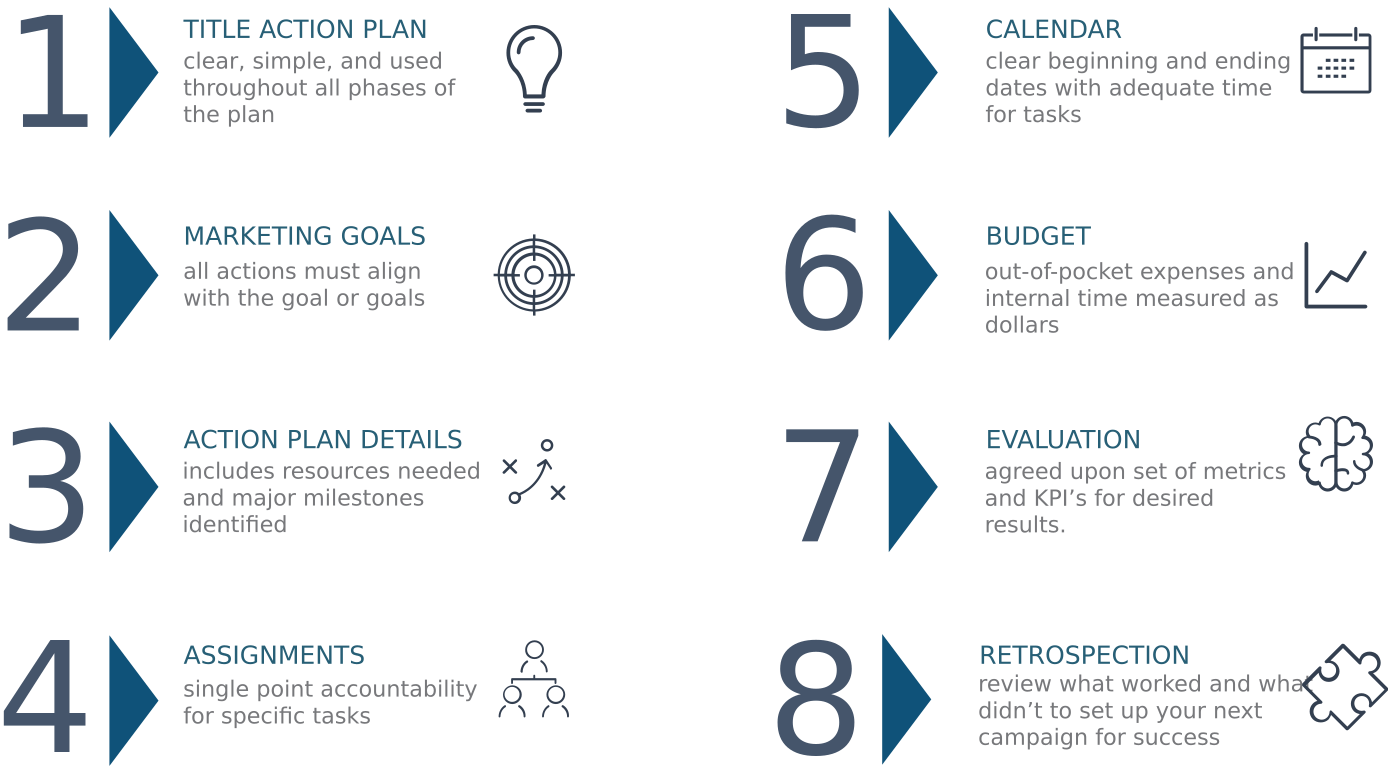Written by
on

Every marketing strategy benefits from a well-written marketing plan, and at the core of every successful plan is a handful of carefully developed marketing action plans.
By definition, a marketing action plan (MAP) outlines a specific activity that will help you accomplish one or more marketing goals.
For example, you might have a marketing goal to increase retention by six percent over a three-year period.
Some of the individual marketing actions for that goal might include:
- Conduct a research study on why people leave
- Assess the current freshmen advising program
- Create a clear profile (persona) of a persisting student
- Conduct an evaluation of courses/programs with high withdrawal rates
As you can see, a marketing goal is the “what,” and the marketing action plan is the “how.”
Marketing Action Plan Template

Notes on Marketing Action Plan Elements
1. A clear but simple title of the action plan. This title is used on the planning calendar and appears as a line item in the overall budget.
2. The marketing goal or goals this plan supports. If the action plan doesn’t clearly support one or more marketing goals, it should be discarded or refined.
3. A detailed description of the action plan. This description is a brief overview of the action plan. In some cases, it includes milestones for action plans that will take longer to complete.
4. The person who is assigned to complete this action plan. This can be an individual working alone or the leader of a team. The key is single-point accountability.
5. Timeline or calendar for completion. Often includes a begin date and an end date.
6. The budget includes the dollars and other resources required to accomplish this action plan and often includes information on whether this is a request for new dollars or reallocated dollars.
The budget for individual action plans, when rolled up, becomes the overall marketing budget.
It is important to remember that the budget commitment is often for multiple years. Be wary of leaders who refuse to commit long-term dollars to marketing.
7. How and when evaluated. This includes not only whether the action plan was completed but also whether or not the action plan had the desired results. In other words, did it move the needle?
8. Retrospection. This evaluation can also provide information on how to improve the action plan if it is to be repeated. For example, if the action plan involves holding an open house for campus visitors, this evaluation would include insights into how to improve future open houses.
Improving the Effectiveness of Your Action Plans
- Make sure each action plan clearly supports one or more marketing goals.
- Properly sequence your action plans. For example, an action plan that involves market research should be completed before the action plan for implementing the results of that research is undertaken.
- Break larger marketing action plans into smaller, more easily managed and evaluated action plans.
- Always make sure you have a single, empowered person who is responsible for the plan.
- Make sure you have sufficient resources. This includes both available dollars and available talent.
- Schedule action plans that are relatively easy to accomplish early in the planning calendar. Accomplishing these action plans helps build momentum.
- Plot all action plans on a calendar. This helps you properly sequence and space your individual MAPs.
- Do not assign too many action plans to a single individual. You must counter the temptation to overuse and burn out your most talented people.
By clarifying what is done and by whom, marketing action plans become an essential tool for both developing and managing your marketing strategy. Ready to get started? Email us today!
Ready to Get Started?
Reach out to us to talk about your strategy and goals.


